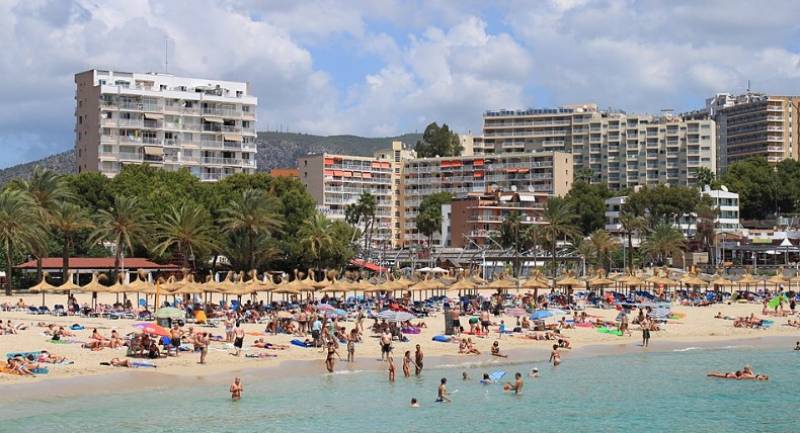
To be listed on the CAMPOSOL TODAY MAP please call +34 968 018 268.
Foreign residents contribute 25% of Spain's growth in GDP
A new Bank of Spain report highlights the positive role of migration to bolster the economy and population

The positive influence of foreign workers on the Spanish economy after the pandemic has been estimated by the Bank of Spain at no less than 25% of the country’s growth in Gross Domestic Product per capita.
The study (‘An estimation of the contribution of the foreign population in Spain to GDP per capita growth in the period 2022-2024’ Cuadrado, Pilar and Ana Regil (2025)) notes that GDP between 2022 and 2024 grew by 2.9% per annum, the bulk of which was thanks to hiring more manual labour rather than increased productivity.
Although this is a typical characteristic of the Spanish economy, the Bank of Spain notes that increased productivity did make a more significant contribution than usual over the period in question.
Workers born abroad were found to have made up 0.7% of the total growth of 2.9%, but this is not the same as workers who do not have Spanish citizenship, who account for only 0.4% of that figure, which is 14% of the growth.
This is significant because there are 6.7 million people with foreign citizenship in Spain but 9 million who were born abroad.
The contribution of migrants has been somewhat greater than in other periods of growth for the Spanish economy, such as from 2006 to 2007, and after the recession of 2008.
The Bank of Spain points out that this is reflected by the fact that foreign workers were hired to fill 41% of the new jobs created last year.
Spain is one of the EU countries to have received the most immigrants since the pandemic, which has compensated for the demographic decline of the native population and enabled the total population to grow by 1.5 million people over that period.
Moreover, although the foreign population remains younger, in relative terms, than the Spanish, the percentage of those who are of working age and employed is lower than for natives. And the fact that migrant employment has grown significantly more than for natives is largely an after-effect of Spaniards who lost their jobs as a result of the 2008 recession, according to the Bank of Spain.
The difference in the length of working weeks for foreign and native employees is also shrinking, from two hours longer for migrants in 2006 to just half an hour nowadays, largely because foreigners tend to work part-time more often.
The productivity of foreign workers is increasingly close to that of Spaniards too, which the Bank of Spain credits to the integration of migrants who arrived early this century and the higher educational levels of those who have arrived in more recent years, thus enabling them to fill more qualified positions, which are typically more productive.
All these indicators are increasingly influenced by the employment status of the foreign population that has been in Spain the longest, since this group is very large (in 2024 75% of foreigners had resided in Spain for at least four years).
Although the Bank of Spain notes that this breakdown of the statistics is “mechanical” and does not consider potential indirect effects between the two groups, it does conclude that “the available empirical evidence for Spain suggests that immigration has no significant negative effects on employment opportunities or wages for native workers overall”.
Image: Bank of Spain
Sign up for the Spanish News Today Editors Roundup Weekly Bulletin and get an email with all the week’s news straight to your inbox
Special offer: Subscribe now for 25% off (36.95 euros for 48 Bulletins)
OR
you can sign up to our FREE weekly roundup!
Read some of our recent bulletins:
Discount Special Offer subscription:
36.95€ for 48 Editor’s Weekly News Roundup bulletins!
Please CLICK THE BUTTON to subscribe.
(List price 3 months 12 Bulletins)
Read more stories from around Spain:































